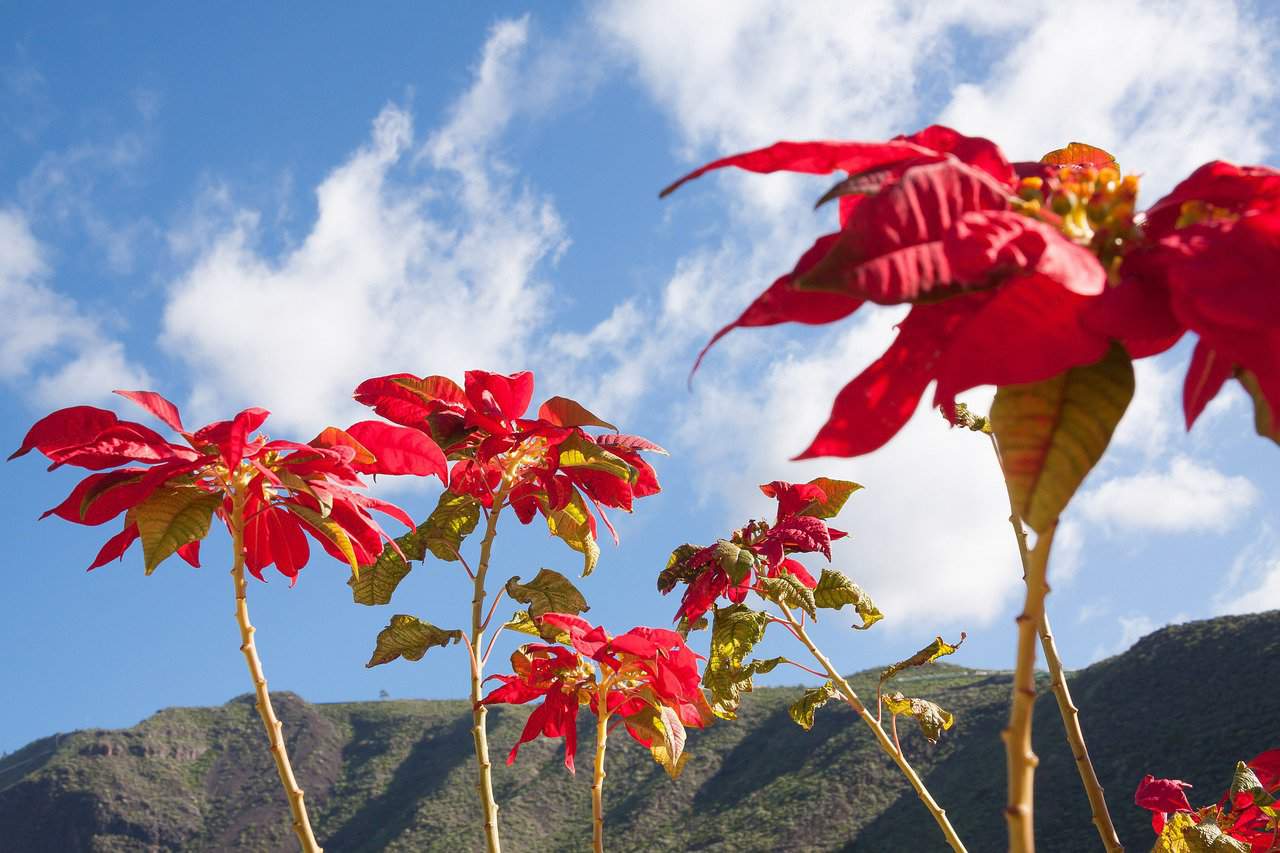When we think poinsettia, we think Christmas plant. Fewer of us think about Central America or Mexico, but actually, that’s where poinsettias come from, despite the fact that they are now found around the world as a leading ornamental, particularly over the holidays.
Poinsettias bloom during this time of the year, when the days are shortest, which is convenient, given their status in the world of gifts. They’re mainly grown as potted plants, however, in the tropics, gardeners can plant poinsettias outside, where they grow into shrubs. Most of us are familiar with poinsettia flowers, which if you look closely, are actually brightly red colored leaves that surround a group of small yellow flowers.
Nurseries offer different varieties of poinsettia (known as pastora or buena noche in Spanish) as potted plants or gardeners can propagate new plants using stem cuttings about 10-15 centimeters long, taken from mature plants. These cuttings should be planted in sandy loam potting soil in containers, which are placed in a shady area and watered weekly to prevent them from drying out. When the cuttings begin to sprout new foliage, they can be moved into the sunlight.
Later, when the plants are well established, they can be transplanted to larger pots, planter boxes or directly outside. These plants flower best in full sunlight and well-drained soil fortified with compost fertilizer. After a year of growth, trim the plants back after blooming to keep them compact.
Small insects such as scales, mites and thrips may attack the foliage but can be controlled with soapy solution sprays.








